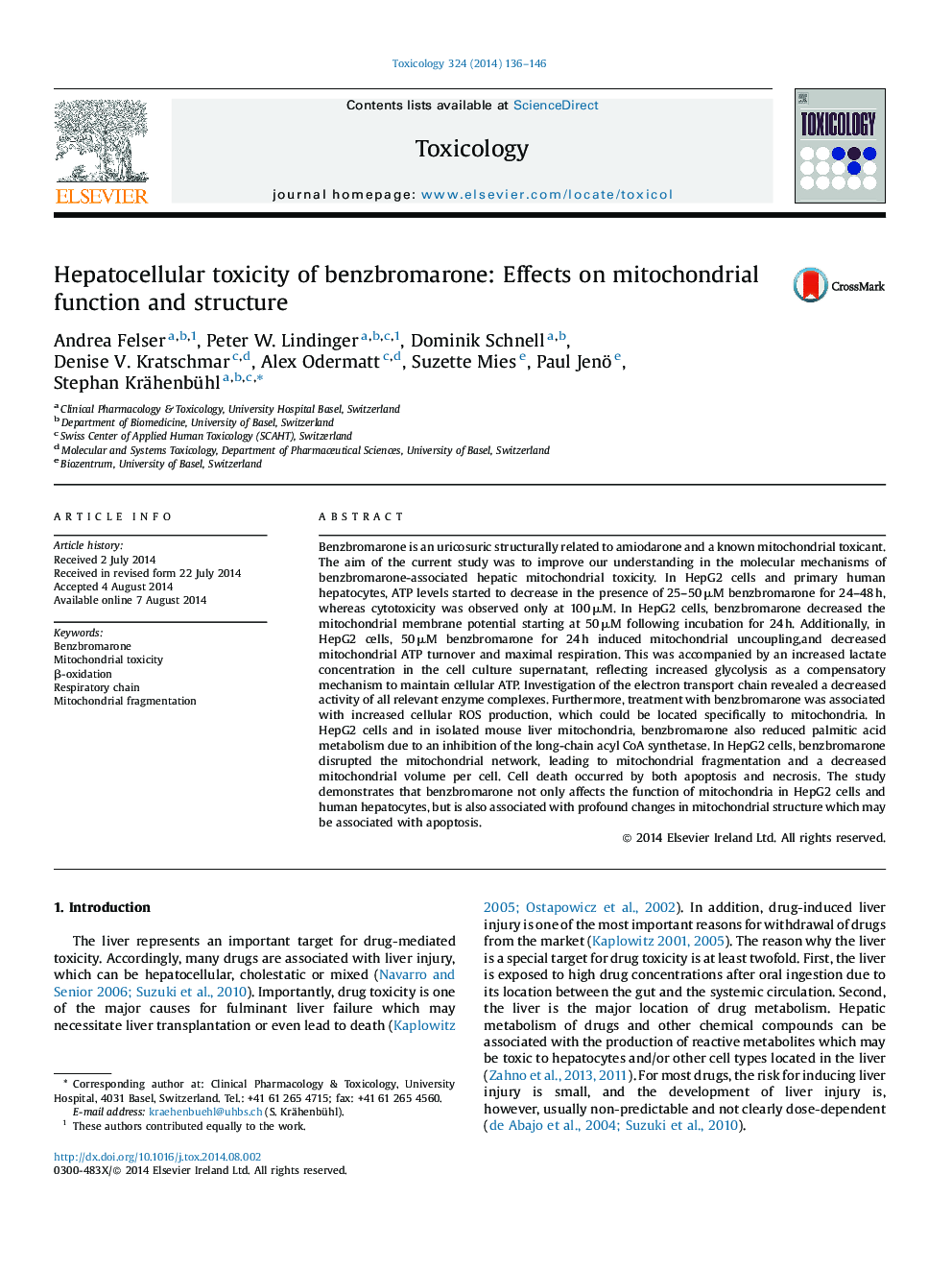| کد مقاله | کد نشریه | سال انتشار | مقاله انگلیسی | نسخه تمام متن |
|---|---|---|---|---|
| 2595534 | 1562332 | 2014 | 11 صفحه PDF | دانلود رایگان |
• Benzbromarone impairs the electron transport chain and uncouples mitochondria.
• Benzbromarone impairs mitochondrial β-oxidation by inhibiting fatty acid activation.
• Benzbromarone disrupts the mitochondrial network and induces apoptosis.
Benzbromarone is an uricosuric structurally related to amiodarone and a known mitochondrial toxicant. The aim of the current study was to improve our understanding in the molecular mechanisms of benzbromarone-associated hepatic mitochondrial toxicity. In HepG2 cells and primary human hepatocytes, ATP levels started to decrease in the presence of 25–50 μM benzbromarone for 24–48 h, whereas cytotoxicity was observed only at 100 μM. In HepG2 cells, benzbromarone decreased the mitochondrial membrane potential starting at 50 μM following incubation for 24 h. Additionally, in HepG2 cells, 50 μM benzbromarone for 24 h induced mitochondrial uncoupling,and decreased mitochondrial ATP turnover and maximal respiration. This was accompanied by an increased lactate concentration in the cell culture supernatant, reflecting increased glycolysis as a compensatory mechanism to maintain cellular ATP. Investigation of the electron transport chain revealed a decreased activity of all relevant enzyme complexes. Furthermore, treatment with benzbromarone was associated with increased cellular ROS production, which could be located specifically to mitochondria. In HepG2 cells and in isolated mouse liver mitochondria, benzbromarone also reduced palmitic acid metabolism due to an inhibition of the long-chain acyl CoA synthetase. In HepG2 cells, benzbromarone disrupted the mitochondrial network, leading to mitochondrial fragmentation and a decreased mitochondrial volume per cell. Cell death occurred by both apoptosis and necrosis. The study demonstrates that benzbromarone not only affects the function of mitochondria in HepG2 cells and human hepatocytes, but is also associated with profound changes in mitochondrial structure which may be associated with apoptosis.
Journal: Toxicology - Volume 324, 3 October 2014, Pages 136–146
